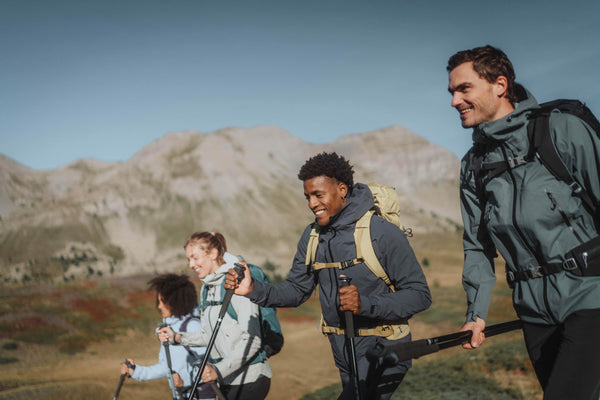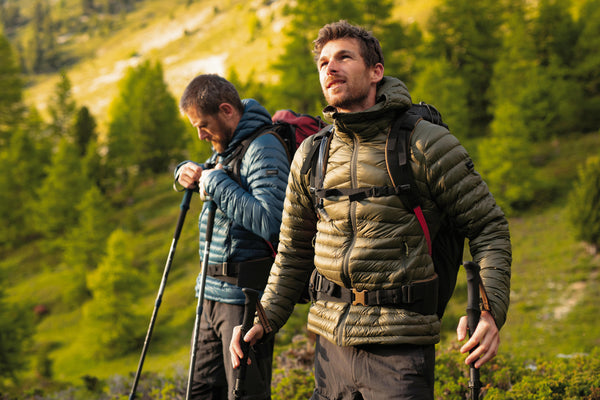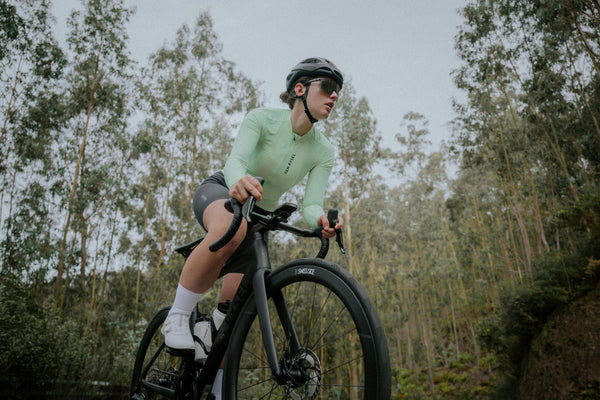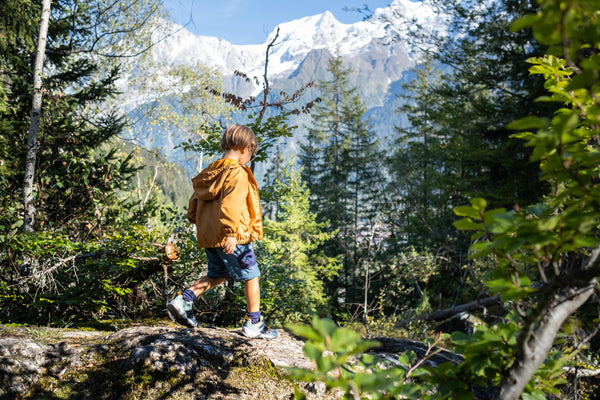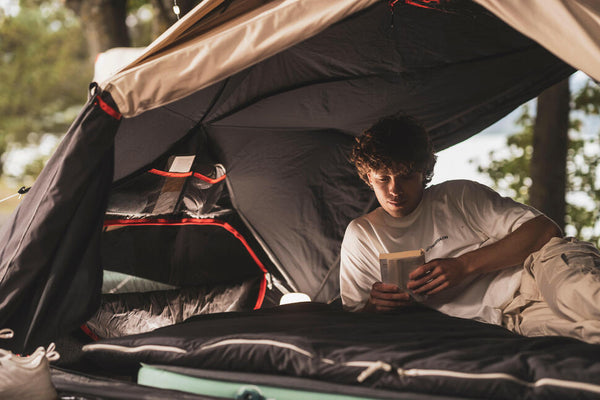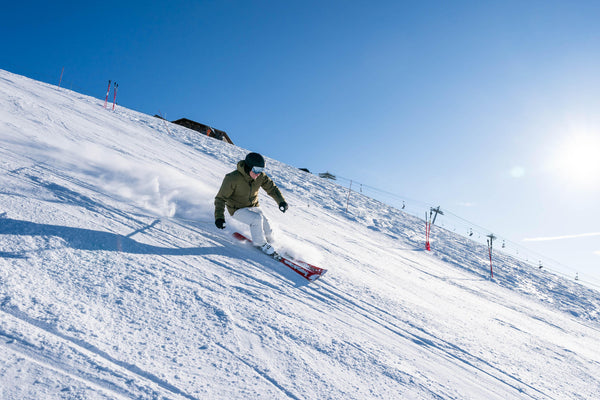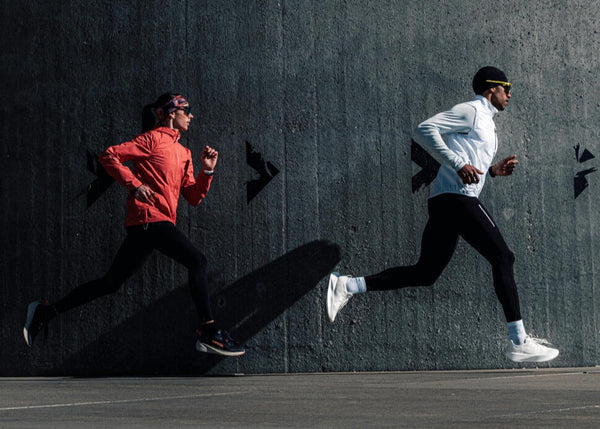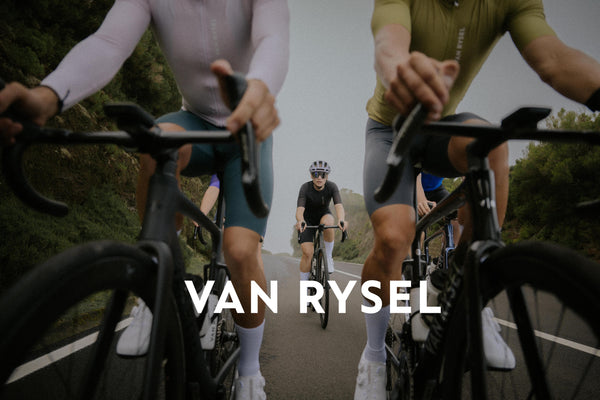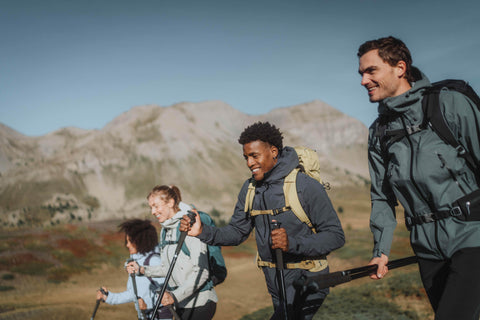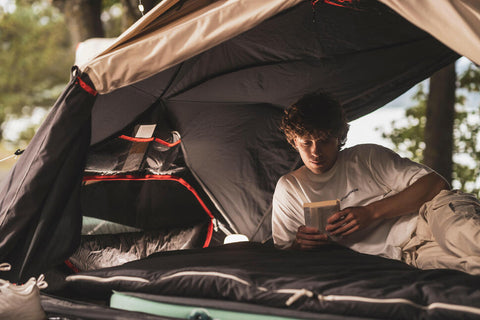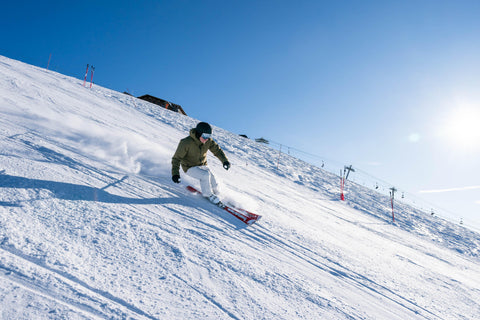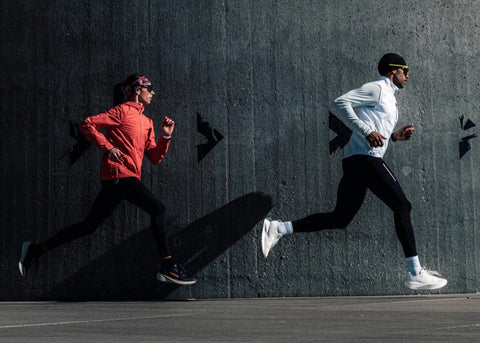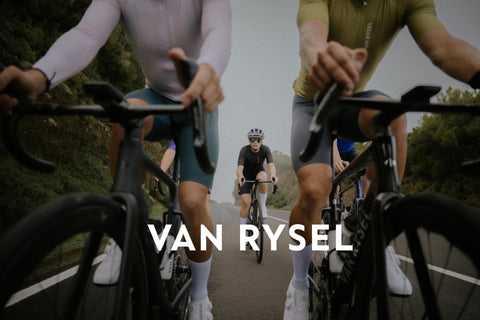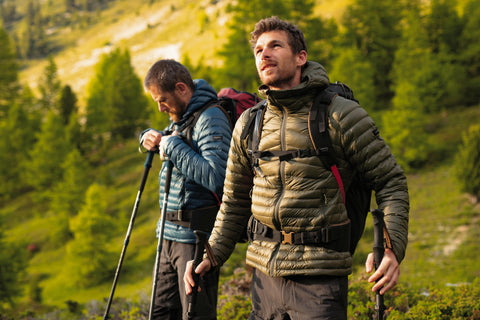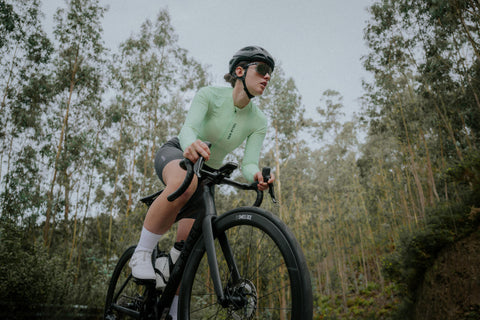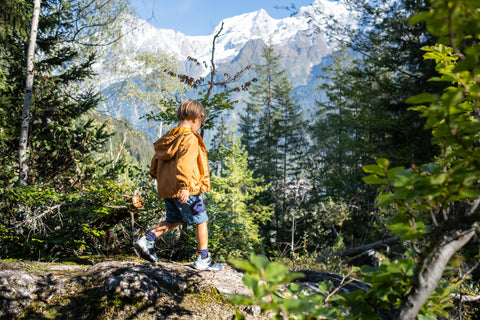
Who We Are: Wedze
Share
How do you develop a freeride ski range starting from a blank page?
At the beginning of 2018, James de Saint Julien, Ski Product Manager at Wedze, was given the task of developing the future freeride ski range. In line with Decathlon's co-design policy, which integrates the users into the product development processes, he had the idea of knocking on the garage door of Adrien Accorsini, a keen collector of skis and member of the skipass community (we visited his garage two years ago). And with the help of the Wedze team, dedicated to freeride, starting from a completely blank page and taking inspiration from Adrien's famous past, they imagined, designed, tested, and developed a complete range of freeride skis, the first products of which will arrive in the stores in autumn 2020. An adventure full of passion and unexpected twists and turns that we have told exclusively to Skipass. Today we launch the creation of this project.
Decathlon and skiing: the story
Decathlon has been making skis for a long time; there are certain old straight skis with pink bases that the team had fun with when taking them out during some ski-tests (see photo below). At the beginning they were branded Decathlon, then Quechua, which, at the time in 1997, grouped together all mountain products.
But the mountain is a vast universe, and that meant a lot of winter sports activities for one brand. In 2006 Wedze was created (which has recently lost its apostrophe), bringing together all that concerns winter sports activities: skiing, snowboarding, sledging and even monoski for a while. Two years later, climbing and mountaineering was attached to Simond, a local and historical mountain equipment brand which was bought by the group. Quechua now focused on the world of hiking.
Wedze
Wedze now became part of the three mountain brands, along with Quechua and Simond, brought together under the roof of the Mountain Store in Passy, Haute-Savoie. Like Quechua, over the years and the many product developments, little Wedze became big. Therefore, the decision was made to split the brand into four separate entities, each dealing with its universe: downhill skiing, freeskiing (which includes freeride, freestyle and ski touring), snowboarding and sledding. For the moment, it is only a matter of internal organization that is not yet relevant to the public, but eventually, each one should have its own name and identity. Although discreet, this change has a concrete influence on the products because, as you will see in this article, the brand goes from a "generalist" vision to a "multi-specialist" vision. For example, not so long ago, Wedze freeride was only just one model, the opposite to what is being developed today and which you will discover further on in this article.
The headquarters of all the mountain brands of Decathlon, a few kilometers away from Chamonix:

Thinking of the future: A difficult task for the product manager
James was previously the ski product manager for all of the combined skiing activities, but after the new organization he became totally dedicated to freeride skiing, with carte blanche to organize the development of the future Wedze range. Product Manager means that you are in the position of balancing and juggling all of the imperatives: the brand (which has its direction, its own will, its positioning), the customers and, more generally, the demand (the famous "market"), and, finally, the physical limits of what can be done with materials (and that is the job of the engineers who remind us gently, but regularly). This work will span over a little more than two years between the first reflections, during the winter of 2017-2018, and the arrival of the skis in the stores, planned for autumn 2020.
With his team, they all got to work in December 2017 and, by April 2018, they had put in place the theoretical part. The following process, typical to Decathlon, is as follows:
Separating the different winter sports activities (freeride, ski touring, downhill, etc.) => Functional analysis of the observed sports activities => The sports needs => Specific product advantages to answer them => Characteristics of the products.
Then we prototype, we test, and when we reach the defined specifications, we validate. So all looks good, in theory at least.
"Freeride"?
To answer the first steps, you have to set the boundaries and define the sports activity. So what is freeride? A question that is not so easy to answer in fact, but essential when making a range of skis known as "freeride". James tells us more about the "Decathlon vision" of this sports activity:
First of all, a mountain, snow, and making ones trace. It's simple. Secondly, it is precisely "making freeride accessible to as many people as possible". Behind accessible, there is more than one meaning, it is not only the price. We also want to play a role in helping people to take the first step. Today there are maybe 70% of skiers dreaming to escape, but less than 20% dare take the step. We would therefore like to offer not just freeride products, but give them the possibility to do it safely. Eventually, we would like to innovate on these niches, do trainings, and so on. Not ourselves directly, but we would like to help organizations that are already doing so.
So it's all about what's happening on the other side of the milestones. Which leaves us plenty of margin. In Decathlon, the sports levels of all products are broken down according to a specific classification, based on figures. The team builds its range according to this system, with products dedicated to each level, in a spirit of progression--but not only; We have three freerider targets:
The 100, 500, and 900. Which means, in fact, beginners, intermediates, advanced, a classification put in place for all of our products. The first are the intermediate downhill skiers who want to discover freeride while keeping the slopes in sight. Then the 500, the intermediate off-piste skiers who will ski everywhere, from the top to the bottom of the runs, the small dells, parts of the forest, etc. And then the 900; they have a true knowledge of the environment, the mountain. They are independent in safety management (the 500 are also starting to be), they are looking for more slopes, searching for powder. They are also the ones who are willing to trudge half-an-hour on foot to find the small corridors that interest them, or even put on skins to go elsewhere. We are close to freerando. For us, the 500 and the 900 do not have a big skiing level difference, they mainly have a difference concerning their knowledge and acceptance of mountain risks. A notion that evolves over time, with maturity, etc. while the skiing level maybe changes less. This is important for us when designing our hardware: it means that the 500 is almost as demanding as the 900. They are just not expecting the same thing.
So, this vision of different ways of doing freeride and the associated levels are summarized on this explanatory diagram of the Wedze vision:

Co-design
April 2018. James and his team already have a draft range, with some ideas of shapes, but still nothing concrete. He would like to put in place a workshop to get everything out in the open and define the different models of the range, before moving to the prototyping phase. From October 2017, he has in mind an article published in Skipass, which presented the fantastic collection of freeride skis of a passionate skier, Adrien. It seems to him a good idea to go and visit him:
This article had really captured me, questioned me: all my freeride memories were about the models that had marked me, the movie segments of my idols ... And the best way to find out where we wanted to go was to know where we come from, or at least where sport comes from. So I contacted Adrien, and I asked him if he was interested in helping us develop our freeride range. I was super happy to find a very open and motivated guy! So we ended up in mid-April in a garage in Annecy, filled with skis and a great team (designer, engineer, store manager, product managers, etc.). We observed all of these models and their evolution over the years, analyzing each time their characteristics and their "product benefits", to use our own jargon, which are: weight bearing properties, maneuvrability, stability, etc.
Adrien, accompanied by Simon, another skipasser who is also an expert on freeride skis, has the team trace the history of freeride through the evolution of the models, from the first straight skis, slightly enlarged to the recent double rockers, including the two-meter-long skis of the great era.

Back to the drawing board
As the visit progresses, and while they talk about the project and possible models, Adrien realizes that the team already has in mind a vision of the range, something quite "traditional", like many other brands and their freeride ranges: the same overall shape, available in different widths for each model.
Adrien: At one point, it was like a trigger going off when I talked about a ski feature "yes, but that depends on what it’s for". James replied, "What do you mean what’s it for: freeride of course" and then I said "but to do what when freeriding?". This is when they realized that one shape in different widths was wrong. I added "I love my Aluflex, straight and stiff to do a derby race with, but I also like going into the powder with my Candide 4.0". All this is freeride, but it is very different in its approach and the equipment used. This is where we said we had to build the range according to different visions, different ways of doing freeride.
For James and his team, this discussion "swept away their entire plan." They understood that there was not a freeride style that only depends on the skiing level, but many, depending on the skiers as well as the desires of the moment. Patrice, product manager for women's skis and present during this visit, adds with a laugh: "It took us three weeks to work on our models, writing it all down, and then these two throw them out in a matter of a few hours!"
From left to right, James, Adrien, and Christian, in charge of designing the prototypes, in the Wedze workshop:

Let’s start again
In the first few hours of the "workshop" in the garage, everything was there to help us think otherwise about the range and the future models.
James: Before we came here, we had started working on a "good for everything, good for nothing" shape, declined in several widths, for corresponding "snow depths". We turned this into a search for the strong identities of each user, and then we tried to develop shapes that responded to the diversity encountered when we observed people skiing.
In just two days, a draft of a new range was written up, with six models. Adrien explains:
In the development team, everyone had a completely different profile. This helped them understand what we meant by these different types of rides. After having analyzed the "tastes" of everyone in terms of skis and ways of skiing, we realized that we could practically put a name of each one of the members of the team on to each model of the new range we had just made.
Each model was then given a provisional code name, some of which may be kept for the stores, the goal was to be able to understand the ski’s program at a glance. Here is the first draft of the range: a beginner's ski (the Rookie), a playful ski (the Toy), a ski for powder (the Pow Chaser), a "good patrolman ski to do everything with" (the Patrol) , a ski to go fast and strong with (the "NRV") and finally, a ski to trudge up the mountain with in search of the famous combe that skies well (the Light). A result that pleased the whole team and especially James:
That's when thanks to Adrien and Simon, I realized that we would have been putting some people "to the side" with our first vision of the range, as we were not offering them the suitable ski. While finally, with no more models than we had imagined at the beginning, we would cover many more profiles. Then, we got to work to make sure these differences could be easily understood by just looking at their shape, their name, their design. Finally, the range that we developed during those two days did not really change a lot, we remained on the main lines developed at that time.
Work in progress…

Prototypes
The range was drawn up, now it was quite "easy" we only needed to manufacture them, that is to say to create the skis that corresponded to the specifications. Not an easy task: it's not enough to say "I want a good freeride ski", snap your fingers and find them immediately in front of yourself, ready to hit the snow. This requires many prototypes to compare shapes and constructions, with many iterations before the validation of the final model.
The development team gave its instructions to the IPW (Industrial Prototyping Workshop) engineers. Found in the Mountain Store, a few meters from the store’s shelves. There, Roberto, Fabien and Christian followed James and his team’s instructions to make the different prototypes for the future models. This team is also in charge of managing mass production in the factories, to ensure that the final products correspond to the specifications (they work in particular by making the prototypes with the exact materials used in the factories to ensure good future correspondence).
These skis are made under vacuum (the pressure is by suction) in a large oven, from different elements that are prepared on site: a small but real production unit. The team makes their own molds, manufactures the cores, cuts out the bases, makes the topsheets, all by demand and custom made (they have a 3D printer which is very useful). It takes around two days, three with the finishings, to make a pair ready to ski. The workshop also has a ski test lab, with machines that test the flexion and torsion to observe their lifespan, as well as a measuring bench to check the shapes (sidelines but especially rocker height and cambres).

The prototyping workshop is just behind the maintenance workshop, where the engineers do the finishing touches on the freshly molded models (smooth down the skis, prepare the sidewalls, sharpen the steel edges, give a structure to the base, waxing, etc.) . In the course of developing a freeride range, the team makes several dozens of prototypes to compare them on the snow. Here are some of them for the "big" beast, the “Pow” (one of them even had the honor of doing the Derby de la Meije last year). Each has a particular shape and / or construction:

On the terrain
The first snow tests took place in autumn 2018, then continued throughout the winter of 2018-2019. For James, the important thing is to "surround yourself with a team of diversified testers". A methodological and empirical method is defined, in order to fix a maximum of constants from one test to another to avoid being too influenced by certain irreducible parameters (the physical condition of the testers at the time of the test, snow quality, etc.). ). They explain :
For one model, we tested four skis, with two different shapes, and each shape had two different constructions. From that, we kept only one shape, and then refined it by keeping only one construction. From this "selected" prototype, we reflected and wondered what we wanted to improve on it. And so on, until we agreed on the final result. Of course, we did all this in all types of different weather conditions, including rain. And not to mention the protocol concerning descents and tests, with which Adrien and Simon had a little more trouble with during powder days (laughs)!
And the end of each day, everything is pooled together in order to evaluate the quality of the day’s test and make the selection between the prototypes. In case of doubt (what do you do if both versions are good?), We refer to the specifications: the prototype that responds the best is the "winner".
A video to show you a bit of terrain and the process of making the prototypes: https://www.youtube.com/watch?v=vZ-xGrO820k&feature=emb_title
Design
At the same time as the tests were taking place, another important job was being done by Victor, the designer, who sat nice and warm in the office: drawing the future design of the range. Because even if a stylish topsheet doesn’t help a ski to ski better, it remains a guarantee of commercial success (it is even one of its main variables).
The work was underway when we visited the workshop (in July 2019). Victor was inspired by glide in the broad sense of the word and particularly water sports (the first photo below) which symbolize the weight bearing properties, a specific characteristic to freeride. The goal is to differentiate themselves from downhill skis, while creating a unity, a visual identity to the range as a whole.
Half-way: the second phase
After the first phase of internal development (in collaboration with Adrien and Simon), now came the second phase, still in the idea of co-design: testing new models by actual users. It started at the very end of last season, where some lucky and hand-picked skiers were able to test several models during the High Test in Val Thorens (the next High Test is scheduled for early December). A skipasser, Nicolas, was present and posted a very comprehensive test of the future (not yet definitive) Pow Chaser: Test Prototype 115. He seemed completely won over by this first version:
As a second pair of skis when Jean-Michel (nod to Bon App ') had finished eating and came out with it : “they are (and will be) probably one of the best choices on (actually future because they’re for 2020-2021 ) the market in terms of value for money given the aggressiveness of Decathlon. And an excellent product as well!
"Long Term Tests"
If you have followed the timing, you will have noticed that there still remains a winter before the arrival of the skis in the stores, or shall I say a part of the range (out of the six models, two are still under development and won’t arrive before 2021-2022). Because even if the models are roughly defined (some adjustments will most probably be done), we still need to ensure their sustainability. It’s now the time for "Long-Term Tests", for the ski patrolmen, ski instructors or other enthusiasts who will have the job of using them regularly over the next few months.
James: It's far from over yet, because we are now entering the last phase of the process for the first models (the entire range will not be complete for another two years) with the Long-Term Testing (LTT), and the idea now is to put 50 days of skiing onto those skis by the end of February. It is more the sustainability that we will be seeking to test: durability of the ski’s characteristics, aging of the topsheet, stability of the bindings, structure, colours, etc. It’s still possible that we’ll go back and look at the shape again if we realize that it doesn’t fit exactly what we had intended.
It is therefore normal that we offer, to those who are interested and motivated to integrate this long-term testing process: two Private Tests of two models of the range are planned and exclusively unveiled to you here. The first is the Slash, the playful ski (ex-Toy) 100 mm waist, and the second one is the Patrol, a ski for everything with a 95 mm waist. Prerequisites: to impress the others on the slopes during the coming winter.
The Slash :

The Patrol:
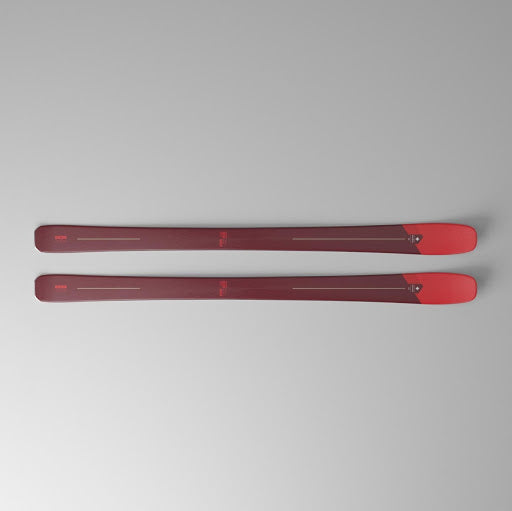
First mid-term review
We are therefore at the eve of refining these first models, with the long-term tests already planned. That is to say half way to finishing the first part of the range, the second part will be the long-term tests during the following winter, 2020-2021. For those who are a bit lost (we understand, we get lost too when we start talking about product development and seasons), here is a short summary of the work of this future freeride range:
- Spring 2018 : first ideas,
- April 2018 : workshop with Adrien and Simon, reset plans, new range defined.
- Winter 2018-2019 : snow tests of the range,each model refined.
- Winter 2019-2020 : long-term tests (LTT - private tests integrated into the process) of the first models, further development of the others.
- Autumn 2020, winter 2020-2021 : arrival in to the stores and the first models on to the feet of our customers,, development of the rest of the range (long-term tests),
- Autumn 2021, winter 2021-2022 : the range is complete and in the stores.
We asked Adrien what it was like to be "on the other side", that is to say, not on the side of the user or customer, but on the side of those who think and develop. So Adrien, a first assessment of this experience? Is it easy to develop skis?
It's not every day that a brand decides to turn everything upside down, to start again from a blank page. Looking back today, I must admit that I am particularly moved and proud when I look at the current overall result.
The challenge was all the more important because it was vital for us to create a minimum amount of tools, which were able to meet the needs of all freeriders, whatever the style, age, level and the playground.
In two working days the foundations were solidly put in place, and during these last 18 months, everyone has naturally added their specific ingredients to ensure that we offer these newly created products, that respond in every way to the specifications that were defined at the very beginning.
The feeling among this team of extremely motivated and passionate skiers was magic from the onset, and I would like to especially thank them for all of the trust they gave me from the start of this project. Admittedly, it was not always easy. I was not always in tune with the choices and opinions of everyone, whether concerning the conception or sometimes the design ... But looking back today, I see that it is a great strength to have different profiles and opinions, because it is these constructive exchanges that depend on the success or not of a project as ambitious as that of creating a Perfect Quiver.

